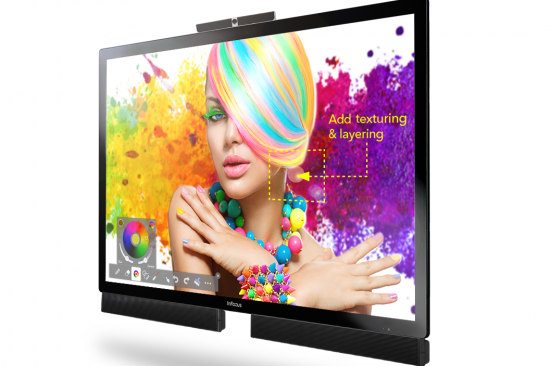InFocus Debuts 70-Inch Mondopad Ultra

Christie introduces value-priced 24/7 flat panel XV series
October 24, 2016
Sharp Debuts New Professional LCD Displays
December 2, 2016InFocus Debuts 70-Inch Mondopad Ultra


The Monopad series by InFocus has a new addition, the INF7023, which is the 70-inch Monopad Ultra. The Monopad series is a line of interactive video conferencing systems that feature a multi-touch high definition display and a built-in Windows PC. Beyond video conferencing, Monopads can also be used for distance learning and training, interviewing, remote patient care, interactive whiteboarding and data sharing. The new INF7023 model in particular has Ultra High Definition 4K resolution on a 70-inch touchscreen PC. The all-in-one system can be viewed and controlled from a tablet or smartphone through wireless casting and allows for collaboration between people in different locations, near or far.
The new InFocus 70-inch Monopad Ultra has a 16-point projected edge-to-edge bezel-free capacitive touch screen to provide fluid multi-touch capabilities. Projected capacitive touch is the touch technology that is used on most smartphones and tablets. The INF7023 is the first Monopad to combine this touch technology with a 4K resolution display. The INF7023 also has a plethora of connections including HDMI x 3, USB Type A x 5, USB Type B, DisplayPort, RJ45/LAN x 2, RS232, Component, VGA, 3.5mm audio in, RCA stereo in, and RCA stereo audio out.
The INF7023 runs Microsoft Windows 10 Pro and features the Intel Core i7-6700T processor, 8GB memory and a 256GB solid state hard drive. The Monopad Ultra is compatible with legacy video conferencing hardware and software such as Skype and several video conferencing systems from other manufacturers. Built-in high-quality camera and speakers allow for professional-grade video conferencing and make the Monopad an all-in-one collaboration system ready to connect people and content easily right out of the box.
The 70-inch Monopad Ultra has a sleek industrial look for use in any professional or educational environment. It starts shipping in October 2016 for an MSRP of $13,999.
According to PMA Research, a leader in market research and analysis for the display industry, sales of touch-enabled models are growing and now represent 2.5% of total volume.